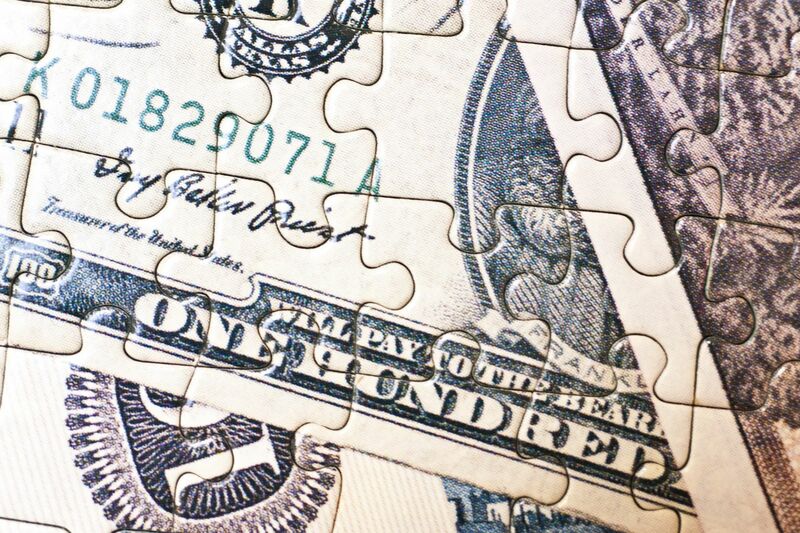The dollar index (DXY00) fell -0.06% on Friday. There were minor dollar declines on Friday. The dollar was damaged by August’s expenditure and September’s MNI Chicago PMI being lower than anticipated. T-note rates were dropped and the currency was affected by dovish U.S. inflation news on Friday, following the August PCE core deflator’s rise at the slowest rate in two years. After stocks dropped and New York Fed President Williams hinted that the Fed could need to maintain low-interest rates for “some time,” the dollar regained the majority of its losses.

The US Dollar index is affected by the inflation rate. (Source: Business Insider)
US Dollar Index Significant Drop
Friday’s US GDP report was mostly worse than expected, which hurt the value of the dollar. August personal spending increased by +0.4% m/m, less than expected (+0.5%). In September, the MNI Chicago PMI fell short of predictions, rising from -4.6 to 44.1. With the smallest increase in two years and line with predictions, the PCE core deflator for August dropped from +4.3% y/y in July to +3.9% y/y, which is dovish for Fed policy. Positively, the University of Michigan’s estimate of U.S. consumer confidence above expectations by 0.4 points, at 68.1.
On Friday, New York Fed President Williams encouraged the dollar index by saying, “My current assessment is that we are at, or near, the peak level of the target range for the federal funds rate, though I expect we will need to maintain a restrictive stance of monetary policy for some time.” A weaker dollar index supported a 0.06% rise in EUR/USD (^EURUSD) on Friday. Eurozone Sep consumer prices grew less than expected and German August retail sales fell by the most in eight months, dovish considerations for ECB policy, limiting euro gains. ECB Governing Council member Kazaks’ dovish comments, “Interest rates will probably remain steady for an extended period,” weighed on the euro.
Eurozone Sep CPI fell to +4.3% y/y from +5.2% in August, better than predictions of +4.5% and the weakest increase in the dollar index in almost two years. September core CPI fell to +4.5% y/y from +5.2% in August, better than expectations of +4.8% and the weakest increase in the dollar index in 13 months. German August retail sales plummeted -1.2% m/m, worse than forecast and the biggest drop in eight months. ECB Governing Council member Kazaks: “Interest rates will likely stay unchanged. If inflation doesn’t fall, it may rise slightly.”
READ ALSO: The Powerball Jackpot Has Grown Once Again to Half a Billion Dollars
Japanese Economy is Playing Up and Down
On Friday, USD/JPY (^USDJPY) gained by +0.08%. Friday, the yen lost early gains and then fell slightly. The yen fell after the BOJ announced an unplanned bond-purchase program on Friday. To lower long-term bond yields, the BOJ bought 300 billion yen ($2 billion) of five- to 10-year bonds. The yen rose on Friday after T-note yields fell and the 10-year JGB bond yield rose to a 10-year high of 0.774%, strengthening its interest rate differentials.
Japanese economic data on Friday was mixed for the yen. August industrial production was steady m/m, beating predictions of -0.8%. In contrast, the Japan September consumer confidence index slid -1.0 to a 6-month low of 35.2, behind expectations of no change. August retail sales rose +0.1% m/m, below expectations of +0.4%. October gold (GCV3) finished Friday at -12.30 (-0.66%), and December silver (SIZ23) closed at -0.291 (-1.28%). Gold fell to a 6-1/2 month low and silver to a 6-1/4 month low on Friday after an early rise. Metals sold off after New York Fed President Williams indicated the Fed would have to maintain restrictive rates “for some time.” Long liquidation pressures impacted gold prices as ETF long gold holdings fell to a 3-1/2 year low on Thursday. Industrial metals demand concerns lowered silver prices after the U.S. Sep MNI Chicago PMI and German Aug retail sales fell more than expected. A weakened currency and lower global bond yields helped.
READ ALSO: Social Security Sends Letters to the Recipients for Refund of Overpayment

















































